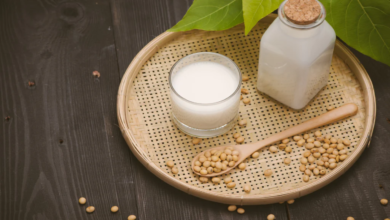Mastering the Art of Milialar: A Comprehensive Guide

What is Milialar?
Milialar, also known as milium cysts or milk spots, manifest as small white or yellow bumps on the skin, commonly around the eyes, cheeks, nose, and forehead. Despite their harmlessness and lack of significant health risks, these tiny bumps can be bothersome for those seeking clear and smooth skin, particularly infants and young children.
Understanding the Art of Milialar
To truly master the art of Milialar, it’s essential to comprehend its roots. The term “Milialar” finds its origins in the Latin words “milia,” meaning thousands, and “lar,” meaning household gods. Translated, it means “thousands of household gods,” referring to the numerous small figurines or statues characteristic of Milialar art.
Milialar art, originating in ancient Rome, was associated with domestic rituals and offerings to various deities. These small statues, believed to possess protective powers, were strategically placed around homes to symbolize good luck and prosperity. As time progressed, this art form expanded across Europe, evolving into a popular technique embraced by artists worldwide.
At its core, Milialar art involves pottery using air-dry clay to craft miniature sculptures. It’s a delicate, intricate process demanding patience, precision, and attention to detail. Before delving into crafting your Milialar pieces, understanding the techniques involved is crucial.
Benefits of Practicing Milialar
Milialar, intriguingly, is also a form of ancient martial art originating in China. Focused on self-defense techniques, it emphasizes soft movements, redirection, and balance to overcome opponents. Beyond its military applications, practicing Milialar offers several benefits for those who engage in it regularly.
Improves physical fitness:
Practicing Milialar enhances physical fitness by incorporating a range of movements that improve flexibility, strength, agility, and coordination. Its soft yet powerful activities engage various muscle groups, contributing to overall physical well-being.
Enhances Mental Focus:
The practice demands presence and concentration, sharpening mental focus, and increasing mindfulness. Practitioners learn to block out distractions and maintain composure in high-pressure situations.
Cultivates Self-Discipline:
Mastering Milialar is a journey that requires dedication and discipline. Regular practice not only hones skills but also instills self-discipline as practitioners consistently strive for improvement.
Boosts Self-Confidence:
Continuous practice and improvement in Milialar contribute to personal growth, setting achievable goals, and challenging individuals physically and mentally. As proficiency increases, so does confidence.
How to Get Started with Milialar
Embarking on the journey of Milialar, also known as “the art of blending,” may initially seem daunting. However, with the right approach and techniques, anyone can master this versatile and creative cooking method.
Familiarize yourself with the concept:
Before diving into the practical aspects, understanding the concept behind Milialar is crucial. It combines contrasting ingredients harmoniously to create balanced and flavorful dishes, originating in France and evolving to incorporate global flavors.
Gather your ingredients:
Milialar requires a diverse array of ingredients. From herbs and spices to meats, vegetables, fruits, and dairy products, having everything on hand for planned dishes is essential.
Understand Flavors:
Achieving success in Milialar cooking involves understanding how flavors work together. Knowing which ones complement or clash is vital. For instance, sweet and sour flavors complement each other, while spicy notes can overpower delicate tastes.
Experiment with Pairing Contrasting Textures:
Textures play a crucial role. Mixing crunchy elements with soft components adds depth and complexity to Milialar dishes.
Start Simple:
For beginners, starting with more straightforward recipes is advisable to stay calm.
Tips for Mastering Milialar
Milialar, a unique combination of calligraphy, painting, and sculpture, has gained popularity worldwide. Mastering this art form requires time, patience, and dedication. Here are some valuable tips for those aspiring to become Milialar masters:
Familiarize yourself with traditional techniques:
Before creating your Milialar designs, understanding traditional techniques is essential—study materials used, such as special paper, ink, reed pens, and fine brushes. Patterns and motifs commonly used in Milialar provide insights into composing your designs.
Practice Regularly:
As with any skill, practice is critical to mastering Milialar. Regular sessions for experimenting with different techniques help develop a unique style.
Pay attention to detail.
The intricate details and precision define Milialar art. Paying attention to even the most minor information while creating your design is crucial.
Experiment with colors:
Milialar involves exploring different colors and combinations to create visually stunning designs.
Exploring Different Techniques and Styles of Milialar
Milialar, or marbling, is a decorative technique that creates intricate patterns on paper or fabric by floating pigments on a liquid surface. Originating in East Asia, it has evolved into different styles and methods globally. Let’s explore some popular techniques.
Suminagashi:
In Japan during the 12th century, Suminagashi, meaning “floating ink,” involves dropping ink or dyes onto water mixed with carrageenan seaweed extract. The design is created by manipulating colors using tools like brushes or combs.
Ebru:
Originating in Turkey during the 15th century, Ebru, also known as Turkish marbling, involves dropping diluted oil paints onto a thickened solution made from gum tragacanth. Thin brushes are used to manipulate the colors.
Incorporating Milialar into Your Daily Life
Incorporating Milialar, synonymous with mindfulness, into daily life brings numerous benefits to physical and mental well-being. Being fully aware and present at the moment, without judgment or distraction, reduces stress, improves focus concentration, and promotes overall happiness.
Starting with small steps, incorporating mindfulness into daily activities, practicing mindful breathing, and integrating mindfulness into everyday tasks are effective ways to make Milialar a part of daily life.
Pitfalls to Avoid When Learning Milialar
Learning Milialar, the art of using facial expressions and body language to convey emotions and thoughts, can be challenging and rewarding. Avoiding common pitfalls is crucial for progress.
Lack of Self-Awareness:
Self-awareness is key. Understand your own facial expressions and body language before attempting to use them to communicate effectively.
Overuse of Expressions:
Balancing expressions is essential. Using or exaggerating expressions can help effective communication.
Ignoring Context:
Context plays a significant role. The same expression can convey different meanings depending on the situation or cultural background.
Lack of Adaptability:
Milialar involves adapting expressions based on the person and context, emphasizing the importance of flexibility.
Personal Experiences and Success Stories with Milialar
Milialar’s popularity has grown, with individuals experiencing its benefits. Personal stories highlight improvements in relationships and family dynamics through enhanced communication, empathy, and understanding.
One such story is Anna’s experience with Milialar. Initially skeptical, she noticed a positive shift in her relationship dynamics with consistent practice. Less arguing, more open communication and a closer connection with her partner were significant outcomes.
Parents also share success stories, crediting Milialar for improved connections with their children. Creating a space for open communication without judgment strengthens family bonds.
Conclusion: Embracing the Art of Milialar
Miliaire, existing for centuries, holds significance across cultures. Mastering this art brings pride, accomplishment, and a connection to heritage. The physical benefits, combined with improved hand-eye coordination, stamina, and agility, make Miliaire a holistic practice for the mind and spirit.
Mastering Miliaire requires dedication, patience, discipline, and an open mind. Embracing the process, understanding there’s no right or wrong way, and incorporating diverse physical exercises further enhance one’s performance.
Finding a qualified instructor or joining a reputable training center is essential. A knowledgeable teacher guides through techniques and instills values such as humility, respect, perseverance, and self-discipline—integral qualities for a skilled Miliaire practitioner.
Embrace your unique style while staying true to Miliaire’s core principles. Incorporating other forms of physical exercises, such as cardio, strength training, and flexibility work, amplifies the benefits of Miliaire, ensuring a well-rounded and fulfilling practice.




